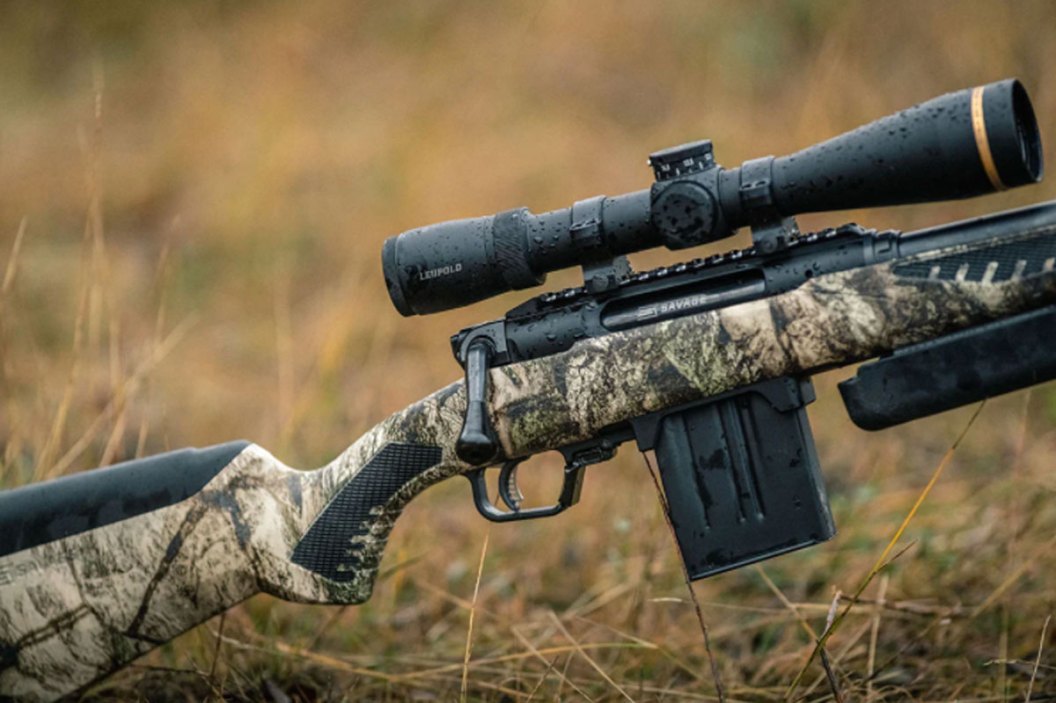Here's what a straight-pull rifle has over conventional bolt guns.
You'll likely be hearing more about straight-pull, bolt-action rifles than you have for a long time with the release of the new Savage Arms Impulse, the first straight-pull rifle released by a major U.S. firearms manufacturer in years. The new rifle comes complete with the company's Accustock and Accutrigger, meaning it will likely be a hot commodity.
Gun makers abroad, like Blaser, Anschütz, and Steyr have several popular straight-pull models in their product lines. These are widely used for rimfire competition shooting.
In the Olympic Games you'll see biathletes using Anschütz straight-pull rifles. However, if built right, a straight-pull rifle can be a fine big-game gun and the mechanism can handle even a .300 Win. Mag chambering.
What Is It?
So what is a straight-pull bolt-action rifle? It's still a bolt-action rifle, but when using a conventional bolt-action, the shooter must perform four distinct actions in order to cycle a round. One a round is fired, the shoot must lift the bolt handle, while rotates the bolt to unlock it.
The bolt and bolt handle must then be pulled back to open the action and extract and eject the spent casing—this action simultaneously cocks the hammer or striker. Then, the bolt and bolt handle are pushed forward to chamber a new round and close the breech. The bolt handle is then rotated down to rotate the bolt and lock it in place for firing.
A straight-pull action reduces this to two linear motions from the shooter, pulling the bolt back, and pushing it forward again, as it uses a different kind of mechanism to lock the action closed for firing.
Benefits of a Straight Pull Rifle
The economy of motion that a straight pull action provides means the gun isn't moving the around so much when the bolt is cycled. This allows a shooter to stay on target easier and to fire faster.
The act of cycling the action itself is also faster and smoother with a straight pull than a conventional bolt-action. This is beneficial for a precision target rifle on a timed course, and in a sporting rifle as well. It's not as fast as a semi-automatic, but it's faster than a conventional bolt gun, and a quick, straight-pull hunting rifle can mean the difference between getting a second chance on an animal in the field with a follow-up shot, or not.
Something else worth mentioning—since the bolt and bolt handle don't rotate, the gun works the same no matter which side the bolt handle is mounted on. The new Impulse takes advantage of this by allowing left-handed uses to simply move the bolt handle to the other side of the bolt. This is impossible with a traditional bolt gun, which must be designed from the start for left-handed shooters.
Important Considerations
The weak point of every straight-pull rifle is it's lockup mechanism, as in, how the bolt is locked closed for firing. A strong, reliable straight-pull lockup is easier to accomplish in a rimfire rifle than in a centerfire hunting rifle, which is one reason you don't see many on the market.
Savage's Impulse uses a locking system called Hexlock, which utilizes six hardened steel bearings to lock the bolt in place inside the receiver's barrel extension. When a round is fired and pressure increases, the lockup mechanism tightens, ensuring the bolt can't move rearward. When the bullet has left the barrel and the pressure drops, the bolt unlocks and can be opened.
Like with all straight pull rifles, there also has to be a mechanism to unlock the bolt if a round hasn't been fired. On the Impulse, it's in the form of a large button on the back of the bolt.
Now there is one other drawback. Due to the more complex locking mechanism needed for a straight-pull gun, they usually have a higher MSRP than a traditional bolt gun. For instance, the new Savage is selling for over $1,400.
NEXT: JERRY MICULEK POPS OFF 6 SHOTS WITH A BARRETT .50 CAL IN ONLY 1 SECOND
WATCH





